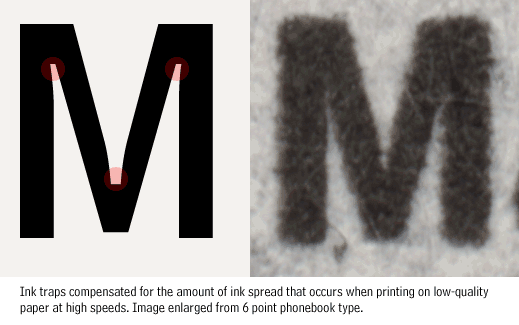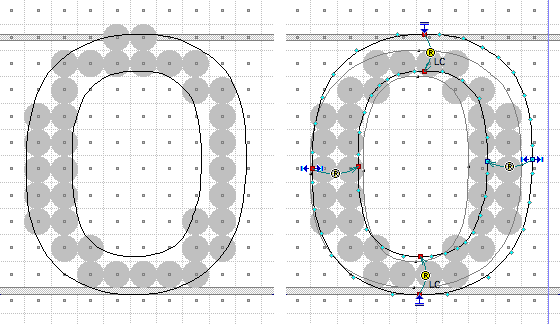什么字體字母和數字大小一樣
Writing went through many iterations before it became what is today. Times New Roman wasn’t the default script for ancient Egyptians, in fact, paper didn’t even exist when the first words were written.
寫作經歷了許多迭代,才變成今天。 Times New Roman并不是古埃及人的默認文字,實際上,寫第一個單詞時甚至根本沒有紙。
This article interview with Vicky Gerchinhoren will take you on a journey through the evolution of fonts and explain some of the “how’s” and “why’s” the fonts we use today came about over thousands of years.
本文對Vicky Gerchinhoren的采訪將帶您了解字體的演變,并解釋我們今天使用的某些“如何”和“為什么”字體已有數千年的歷史了。
物理限制使字體不斷演變 (Physical constraints made fonts evolve)
Different scripts come from different times in history and their shapes have a relationship with a particular historical moment. For example, Italic calligraphy arose from a period of high paper and bureaucratic work in the Italian chancery during the Renaissance period. The number of documents needed to be written made the humanist minuscule script be deformed — transformed. It was so much work that the amount of traces was naturally reduced and the letters were naturally skewed by the speed of their writing. As a result, the letters were skewed and a predecessor of the modern Italic script was born.
不同的腳本來自歷史的不同時期,它們的形狀與特定的歷史時刻有關系。 例如,在意大利文藝復興時期,意大利書法界的高級文書和官僚工作時期就產生了斜體書法。 需要寫的文件數量使人文主義的小腳本變成了變形。 這項工作非常繁瑣,以致自然減少了痕跡的數量,并且字母的書寫速度自然使其傾斜。 結果,這些字母歪斜,誕生了現代斜體文字的前身。
So Italic came from people writing faster, reducing the number of strokes, and creating less formal calligraphy.
因此,斜體來自人們的書寫速度更快,減少了筆畫數量并減少了正式書法的產生。
Each script communicates a feeling with their shapes, we perceive different things from content written in different letter styles. Both typeface -mechanical- or calligraphic -manual- have a trace of cultural heritage that -I believe- is amazing.
每個腳本都以其形狀傳達一種感覺,我們從以不同字母樣式編寫的內容中得到的感受是不同的。 機械的或書法的兩種字體都有一定的文化傳承,我相信這是驚人的。
In modern times, we associate Blackletter with dark non-ecclesiastic purposes because they are bold, obscure, and also difficult to read.
在現代,我們將Blackletter與黑暗的非教會目的聯系在一起,因為它們大膽,晦澀且難以閱讀。
Blackletter, for instance, comes from the times of the middle ages when they didn’t have access to the same resources as we do today. Instead of writing on paper, they used animal skins, which were harder to get and expensive.
例如,Blackletter來自中世紀的時代,那時他們無法獲得與我們今天相同的資源。 他們使用動物皮代替紙上書寫,這種皮較難獲得且價格昂貴。
Due to the lack of resources, high costs, and sacred content, the writing was reserved for important people like monks and priests. It also required scribes to fit a lot of text per page, hence the small inner space and between the letters, the result is a very condensed letter shape, obscure, and dark-bodied.
由于缺乏資源,高昂的成本和神圣的內容,這些文字被保留給僧侶和牧師等重要人物。 它也要求抄寫員每頁適合很多文本,因此內部空間很小,字母之間也很狹窄,結果是字母的形狀非常凝結,晦澀難懂。

Back then, Blackletter was used in caves and monasteries for sacred books, today it has been adopted and used by Metal bands! You would not see a dark font like Blackletter used for something like a kid’s birthday party… and that’s because there is a very close relationship between text and visual design.
當時,Blackletter被用于洞穴和修道院中的神圣書籍,如今,它已被Metal樂隊采用并使用! 您不會看到像Blackletter這樣的深色字體用于孩子的生日聚會……這是因為文本和視覺設計之間存在非常密切的關系。
從紙到電腦 (From paper to computers)
Calligraphy is the hand script and typography is the design of the letters and text for mechanical writing. From manual writing to mechanical or automatic writing, you have the Industrial Revolution and a guy called Gutenberg.
書法是手寫體,而排版是機械書寫的字母和文字的設計。 從手動書寫到機械或自動書寫,您都有工業革命和一個叫做Gutenberg的家伙。
Gutenberg designed the way to reproduce text by breaking it down into little mobile pieces allowing you to compose words and columns of text, effectively creating print and making books available to everyone in the world.
古騰堡(Gutenberg)設計了一種將文本分解成多個小塊的可移動文本的方式,使您可以撰寫文本的單詞和列,有效地創建印刷品并將書籍提供給全世界的所有人。
“書法是手寫文字,而排版是文本的機械設計” (“Calligraphy is the hand script and typography is the mechanical design of the text”)
Fonts are important not just because we read through them, but because there is style and meaning in their shapes. Throughout history, we have had different needs and these needs can be seen through the transformation of fonts from the Stone Ages and Ancient Egyptians to the Renaissance and on through the 21st century.
字體之所以重要,不僅因為我們通讀了它們,還因為它們的形狀具有風格和含義。 縱觀整個歷史,我們一直有不同的需求,這些需求可以通過從石器時代和古埃及人到文藝復興乃至21世紀的字體轉換來看出。
Needs that we have now were not covered back then, like computer screens or even the tiny print that you can find in a phonebook. In fact, the Bell Centennial font was specifically designed for the Bell phone books so the letters would hold the ink in ink traps and would look sharp after it spread on the paper. This was a big design challenge since the font size had to be extremely small and legible.
那時,我們現在沒有滿足的需求,例如計算機屏幕或什至可以在電話簿中找到的微小字體。 實際上, Bell Centennial字體是專門為Bell電話簿設計的,因此字母可以將墨水保留在墨水收集器中,并且在墨水散布在紙張上后看起來會更加清晰。 這是一個很大的設計挑戰,因為字體大小必須非常小且清晰易讀。

Matthew Carter, the designer who created the Bell Centennial font is also responsible for one of the first fonts to be used on-screen: Verdana. Carter is a very purpose-driven designer, and he created Verdana with functionality and technical issues in mind at the same time to assess perfectly how the font would be rendered in its environment. To improve legibility for the screen, he increased the x-height (which is the lower case letter height) in order to give more room to the portion of the letter that has the larger amount of visual information, which our brain uses to process the text and read the words. This enhancement is especially useful for reading faster on screens and was imperative in the early days of digital text when displays were extra pixelated and blurry.
創建Bell Centennial字體的設計師Matthew Carter也是負責在屏幕上使用的首批字體之一: Verdana 。 Carter是位目標明確的設計師,他在創建Verdana時就同時考慮了功能和技術問題,以完美評估字體在其環境中的呈現方式。 為了提高屏幕的清晰度,他增加了x高度(即小寫字母的高度),以便為具有較大視覺信息的字母部分留出更多空間,我們的大腦將這些信息用于處理文字并閱讀單詞。 此增強功能對于在屏幕上更快地閱讀尤其有用,并且在數字文本出現的早期,當顯示器出現額外的像素化和模糊時,這勢在必行。

字體如何適應我們的現代使用 (How fonts adapted to our modern use)
Due to the pixelation of screens, letters in certain fonts and sizes will not render properly and will actually blend together and blur. The way typeface designers managed to fix this is by meticulously altering the letter’s position and shape to feed the pixel grid proportionally, which they call hinting.
由于屏幕像素化,某些字體和大小的字母將無法正確呈現,并且實際上會融合在一起并模糊。 字體設計人員設法解決此問題的方法是通過精心更改字母的位置和形狀,以按比例輸入像素網格,他們稱之為提示 。
Hinting takes a lot of engineering work and is not mathematical as most engineering jobs, but actually requires years of a trained eye to visually map out the text.
提示需要大量的工程工作,并且不像大多數工程工作那樣算術,但是實際上需要多年的訓練有素的眼睛才能直觀地繪制出文本。

An example of hinting in action is when you might have noticed the “x”,“e” or “z” often shift slightly right or left as you type or change font sizes, so it does not appear attached to the adjacent letters. It’s notable that some fonts don’t have hinting work done at all and these are often the cheap or free fonts, which you wouldn’t want to use in a professional setting.
例如,當您可能注意到“ x”,“ e”或“ z”在鍵入或更改字體大小時經常向右或向左移動時,它不會出現在相鄰字母上,這是一個提示作用的示例。 值得注意的是,某些字體根本沒有完成提示工作,而這些字體通常是廉價字體或免費字體,您不希望在專業環境中使用它們。
See How do fonts influence the way you type to learn more about the use of fonts in everyday life and branding.
請參閱字體如何影響您的鍵入方式,以了解有關在日常生活和品牌中使用字體的更多信息。
翻譯自: https://medium.com/@fleksy/how-letters-and-fonts-adapted-to-our-screens-3811e98017b
什么字體字母和數字大小一樣
本文來自互聯網用戶投稿,該文觀點僅代表作者本人,不代表本站立場。本站僅提供信息存儲空間服務,不擁有所有權,不承擔相關法律責任。 如若轉載,請注明出處:http://www.pswp.cn/news/274199.shtml 繁體地址,請注明出處:http://hk.pswp.cn/news/274199.shtml 英文地址,請注明出處:http://en.pswp.cn/news/274199.shtml
如若內容造成侵權/違法違規/事實不符,請聯系多彩編程網進行投訴反饋email:809451989@qq.com,一經查實,立即刪除!





——Archives)









![[轉]C#委托的異步調用](http://pic.xiahunao.cn/[轉]C#委托的異步調用)


